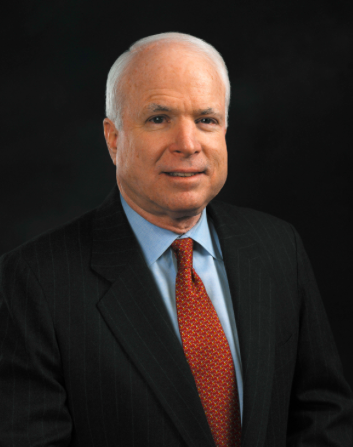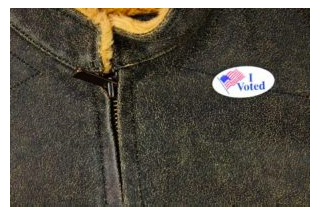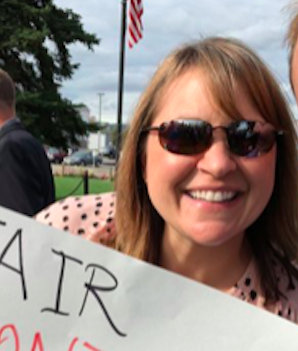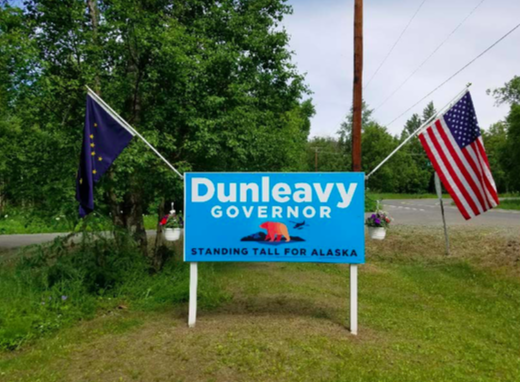HE HAD AN IMPACT ON ALASKA POLITICS AND LIFE
“Today we lost a true American hero. John McCain’s life embodied steadfast patriotism and sacrifice in the service of a cause greater than self. His courage and indomitable spirit inspired millions in America and across the globe. Our prayers go out to his wife Cindy, and the entire McCain family. To my friend John: Godspeed. Semper Fidelis. Fair winds & following seas. May you rest in peace.” – Sen. Dan Sullivan
Few Alaskans can remember a time when Sen. John McCain wasn’t a force in the American political landscape. And few Alaskans can forget the impact he had on the 49th State’s politics when he chose an Alaska governor as his presidential running mate in 2008.
McCain, a Vietnam War former prisoner of war, and a two-time Republican presidential candidate who made Gov. Sarah Palin a household name in America, has died following a long battle with brain cancer.
His death on Saturday was four days short of his 82nd birthday.
“American hero, remarkable intellect, iron will, and unquestionable integrity—those are just some of the words that come to mind when I think of Senator John McCain,” said Sen. Lisa Murkowski. “He was one who always did what he thought was right and motivated others to do likewise. I have been blessed to serve in the US Senate with him for the past 16 years and will dearly miss my friend and colleague.”
Although he was not an Alaskan, he had undeniable influence on Alaska politics. In a completely surprising move, he asked Palin to become his running mate in his bid for president in 2008. Her name on the ticket was somewhat of a “Hail Mary” for a candidacy that was falling behind the populist rise of Barack Obama.
Palin and her home state were thrust onto the national scene — she was a glamorous and well-spoken maverick politician who the Republican Party hoped would attract and connect with voters in a way McCain wasn’t accomplishing. Her hometown of Wasilla was subsequently scrutinized and often ridiculed by the mainstream media as an outback hillbilly haven.
Before the McCain-Palin ticket, few in America could have even placed Wasilla on the map, but suddenly it became a tourist destination, and remains so today because of the surreal episode that enveloped the state.
The McCain-Palin bid for president and Vice President was ultimately drama-filled, and after the November election and loss to Obama, Palin’s gubernatorial administration was hounded by an unrelenting and ridiculing media in such a way that she eventually resigned, saying that she had become more of a hinderance than an asset to good government.

Sean Parnell, the lieutenant governor, took her place and was governor for six and a half year years. With Palin’s surprising exit from office in 2009, a cascade of other political fortunes were made and lost. Craig Campbell became lieutenant governor, and then Mead Treadwell after him. Bill Walker won the General Election in 2014.
Congressman Don Young issued a statement on Saturday: “Anne and I are saddened to hear of the passing of Senator John McCain. Our prayers are with his family during this difficult time. A war hero and a fighter who committed himself to a lifetime of public service, he will be deeply missed in the halls of Congress. Rest in Peace, Senator.”
Former Gov. Sarah Palin had issued a statement on Friday, after the McCain family announced the senator would no longer receive treatment for cancer. His age and the advancement of the disease made the outcome certain.
“May comfort and peace envelope them. May my friend sense appreciation for his inspiration to serve something greater than self,” Palin wrote of the McCain on Instagram.
Sen. Dan Sullivan had already made a statement on Friday, when the news of McCain’s impending death was made. On Saturday, Sullivan offered his further condolences to the McCain family: “Today we lost a true American hero. John McCain’s life embodied steadfast patriotism and sacrifice in the service of a cause greater than self. His courage and indomitable spirit inspired millions in America & across the globe. Our prayers go out to his wife Cindy, and the entire McCain family. To my friend John: Godspeed. Semper Fidelis. Fair winds and following seas. May you rest in peace.”
Sen. Lisa Murkowski was in Savoonga, Alaska, chairing a Senate Indian Affairs Committee field hearing on Saturday and could not be immediately reached for comment.
A LONG, HISTORIC LIFE
McCain was born Aug. 29, 1936 at the Naval Air Station in the U.S.-held Panama Canal Zone, where his father was stationed.
A graduate of the U.S. Naval Academy in 1958, he joined the Navy, became an aviator, and flew bombing missions over North Vietnam, where he was shot down and seriously injured in 1967. Captured by the North Vietnamese, he was held as a prisoner of war until 1973. He was tortured, but he refused an offer to be released “out of sequence” of others who had been held longer than he. His injuries from the war left him with lifelong disabilities.
He moved to Arizona after retiring from the Navy and entered politics, serving six terms as a U.S. senator.
McCain launched his second bid for president with an informal announcement in February, 2007 on the Late Show with David Letterman. He had previously run, but lost the primary in 2000 to George W. Bush.
McCain lost to Barack Obama after receiving 173 electoral college votes to Obama’s 365. He won 46 percent of the popular vote, Obama took 53 percent.
McCain was a frequent critic of President Donald Trump and in an autobiography also criticized his own choice of Palin as his running mate.
















